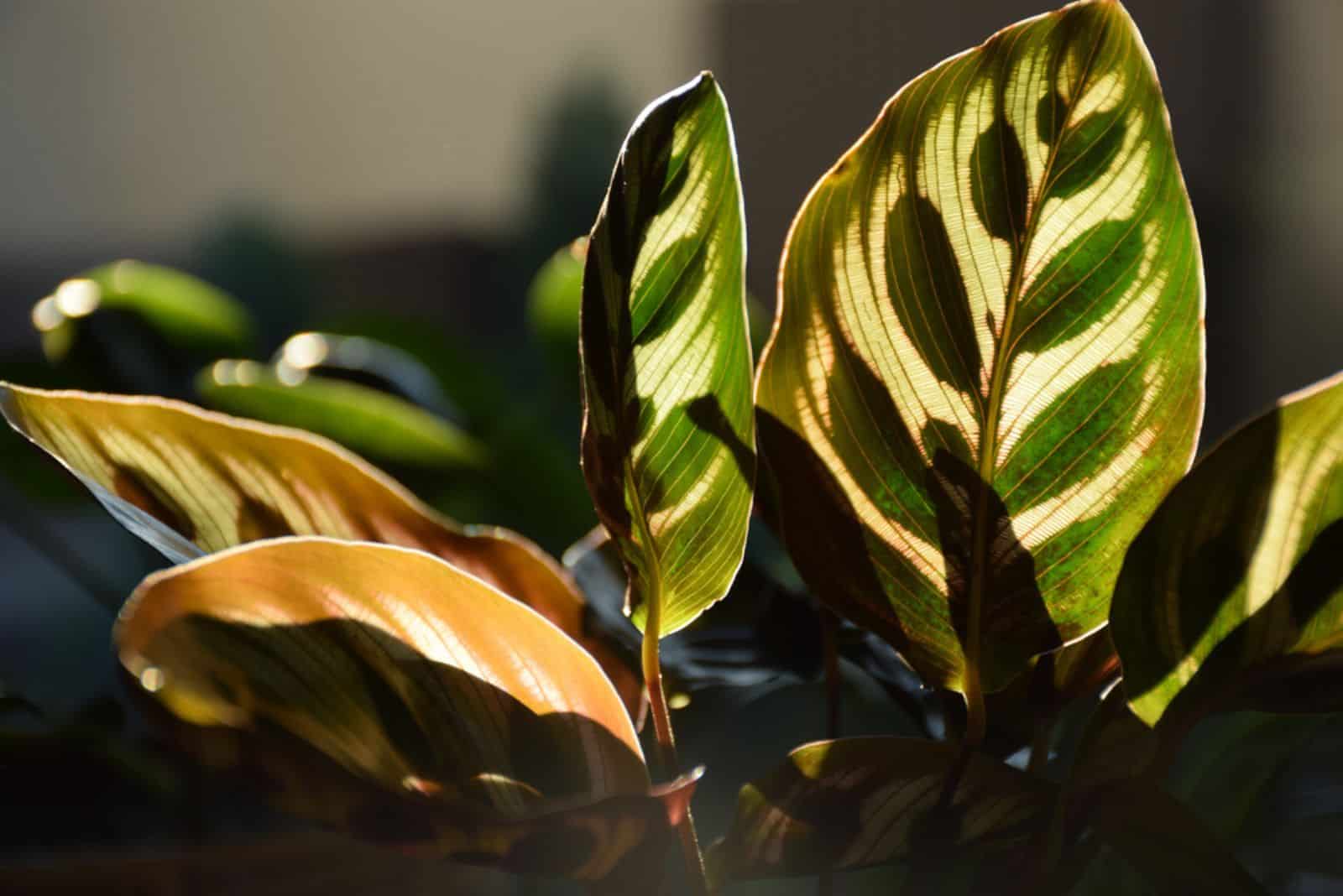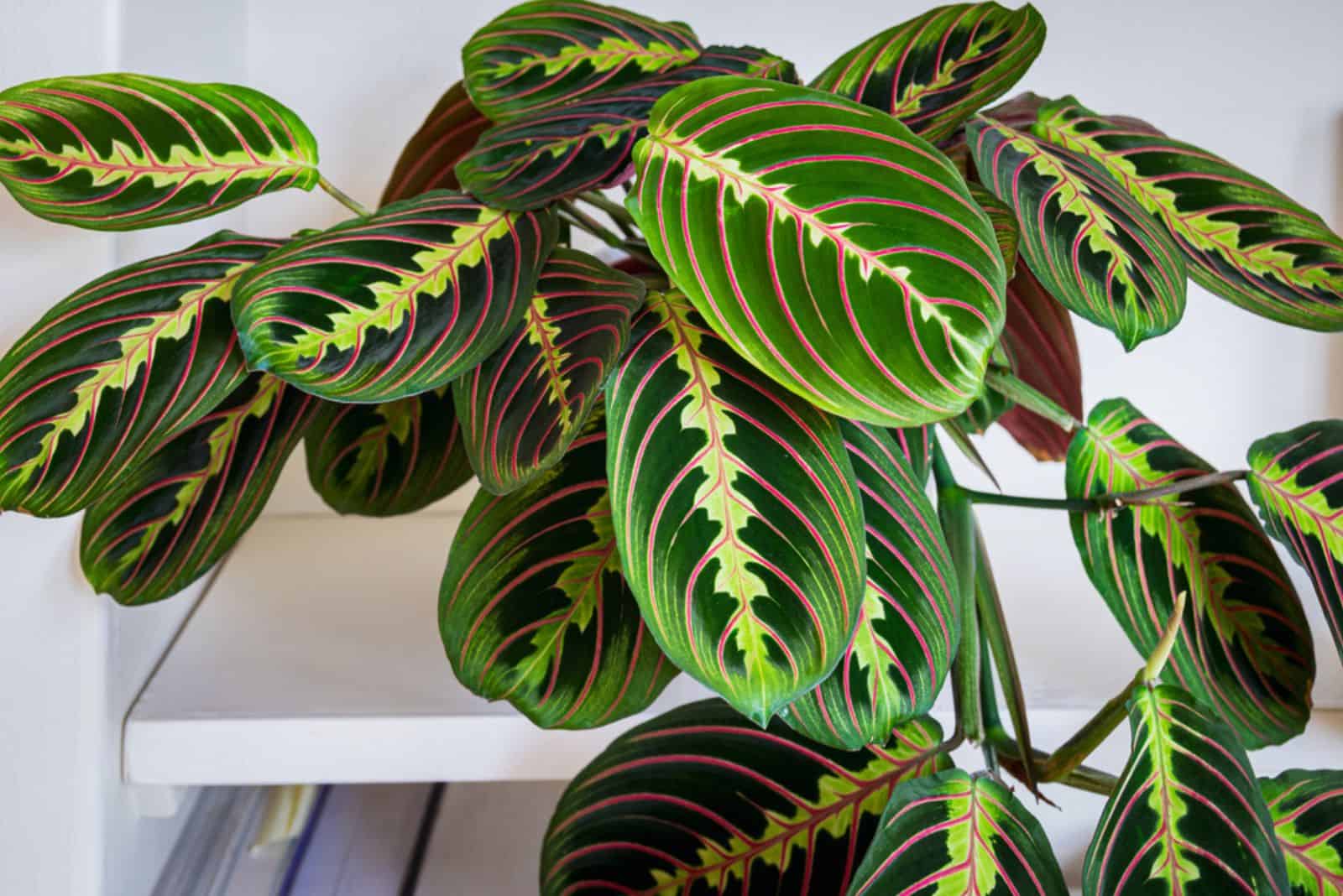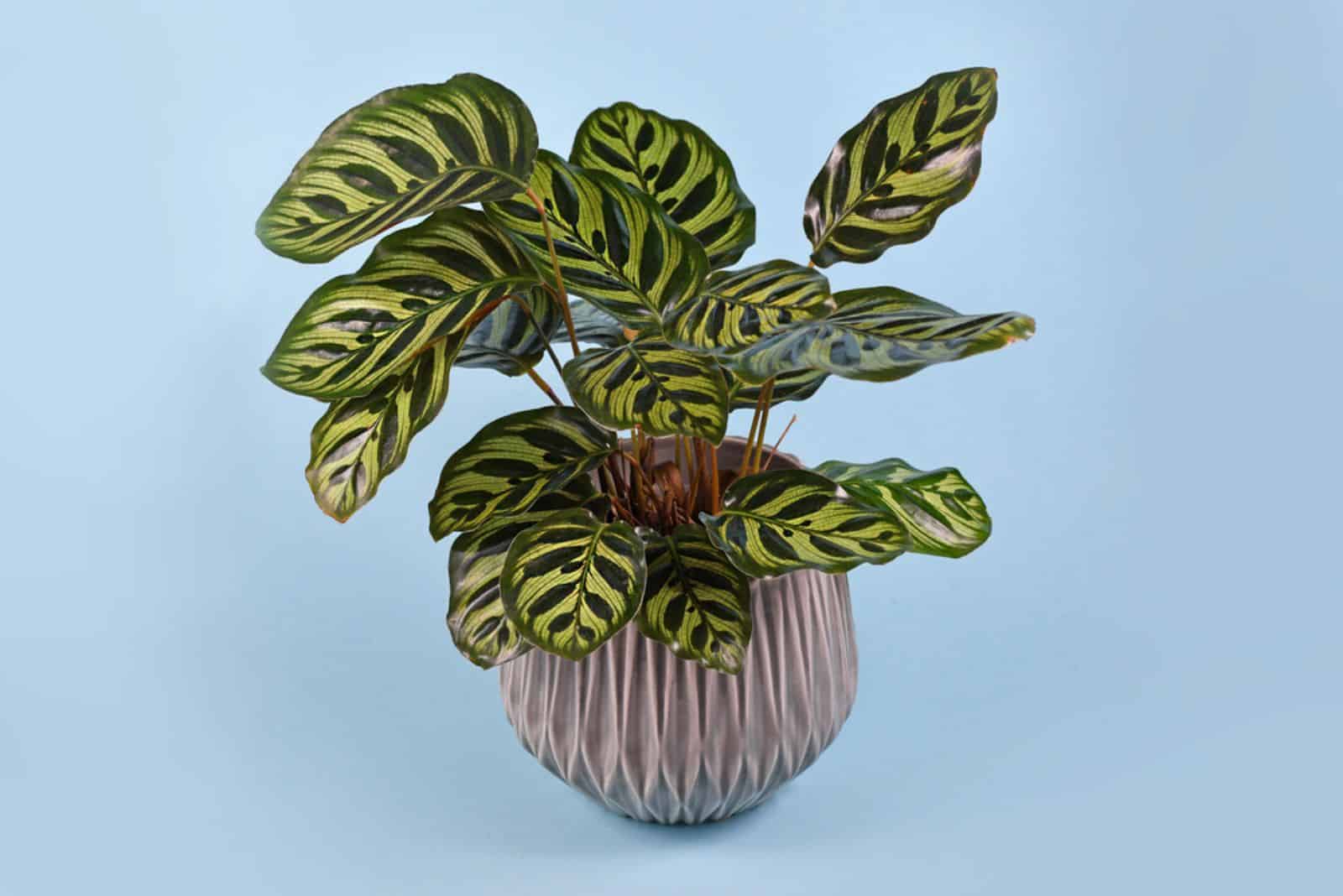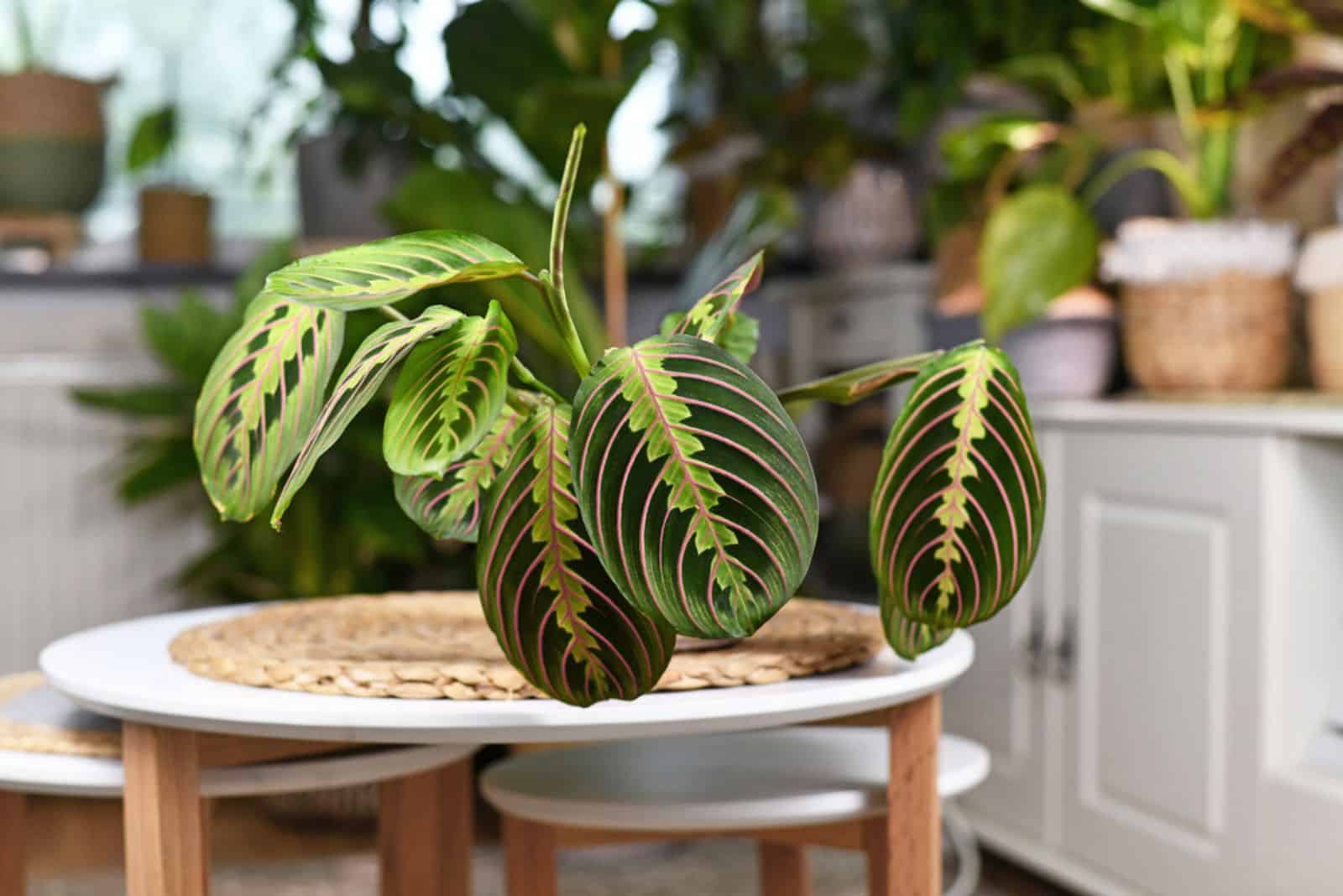There are unique types of houseplants referred to as prayer plants. Now, what’s special about these plants is that they move throughout the day — they close their leaves at night and then open them during the day.
They look like they are praying when their leaves are closed, hence the name prayer-plants.
Over 500 plant species have this special feature, including the Marantaceae family, as well as the Calathea, Ctenanthe, and Stromanthe species. All of these plants are recognized by this specific movement, which is known as nyctinasty.
Keep reading to learn more about the behavior of the prayer plant at night!
The Prayer Plant At Night
If you own any type of Calathea, Stromanthe, Maranta, or Ctenanthe indoor plants, then you are dealing with a prayer plant. The most prominent is the Maranta Leuconeura, which is why all prayer plants are often mistaken for these plants. As we said, there are about 500 different prayer-plants out there!
These plant genera and the species within them are native to tropical and South America, despite their African ancestry.
As well as their special leaf movement, most of these houseplants are extremely beautiful — with different colors, shapes, sizes, and pinstripe variegations on their leaves, they can decorate your space and make any room look more lively. For instance, the Calathea Rosy is great for that subtle pop of color!
They are also relatively easy to take care of, which is another reason you should get one for your home.
Now, let’s see what’s so special about these little prayer plants!
What Is Nyctinasty?
The special leaf movement observed in some plant species is called nyctinasty. Prayer plant movement is related to the transition from night to day, and vice versa: when it’s dark outside, the leaves of these plants are closed; it appears as though the leaves are the plants’ eyes, which are closed and sleeping during the night.
The morning light acts as a stimulus that encourages the prayer plant’s leaves to open until darkness arrives again.
These plants move according to the circadian rhythm (just like us humans!), which means that their state changes 24 hours a day. Specialized cells responsible for these changes are called pulvini.
The joint-like cell clusters are found at the base of the leaves. Depending on how much liquid is present in each, these cells either expand or constrict. As the sizes of these cells alter, pressure is created, which causes the leaf to move.
Why & How Do They Move?
Scientists have not yet come to a conclusion on the reason leaves move during the day and night. The one reason that makes the most sense is related to watering needs. It is believed that these plants open their leaves during the day so that they can catch rain and absorb moisture.
They close their leaves during nighttime to prevent rain or dew from sitting on them, which would ultimately attract fungi and bacteria. Another reason could also be to minimize moisture loss.
There are some speculations related to protection from predators, but also that they close due to temperature regulations. Who knows, maybe they close up just to be warmer during the night, or maybe they simply like to pray when there is no one around!
Some plant lovers have mentioned how the leaves shift in the evening from flat on horizontal stems to elevated on raised, or even stems in vertical positions. The erect leaves drop down and flatten out when morning light begins to seep through your window, although this transformation occurs more gradually than the one that occurs when the sun rises.
Once I put my Calathea Fasciata in a dark room at noon, and the leaves closed after a while. These leaves are also referred to as praying hands, and they are truly amazing.
If you want to see a prayer plant time-lapse, check out this video:
Prayer Plant Care Tips
These are pretty much low-maintenance plants — you will just have to provide them with enough light and high humidity to keep them happy and healthy. Here are some basic tips for taking care of prayer-plants:
• Soil requirements — use well-draining potting soil that is also porous. You should add perlite and peat moss to your potting mix, and remember to plant them in pots with drainage holes in the bottom. The wrong soil type might be one of the reasons the prayer plant is drooping.
• Water requirements — these plants need lots of water. They thrive in moist soil, which is why you should water them frequently. However, make sure not to overwater them because it can lead to root rot. If you notice yellow leaves, inspect for root rot immediately. To avoid overwatering, check the soil before watering and water them only if the top few inches of the soil have dried out.
• Light requirements — they thrive in bright indirect light, though they can grow perfectly fine in low light conditions as well. If you keep them in direct sunlight, those lovely green leaves will eventually start turning brown and crispy. Therefore, never let them sit under the full sun for too long. You can keep them in hanging baskets or on a windowsill.
• Temperature requirements — prayer plants like to pray in warm temperatures. They prefer temperatures between 65 and 80 degrees Fahrenheit.
• Humidity requirements — these plants thrive in high humidity, so you should definitely consider investing in a humidifier if you live in a drier climate. Another alternative that you can use to improve humidity is creating a pebble tray or simply putting the plant in a humid room (kitchen or bathroom).
• Fertilizer requirements — prayer plants wouldn’t mind a little snack every now and then, so you should apply fertilizers once a month during the growing season to ensure lush and rapid growth. Don’t fertilize them during the winter because they enter dormancy.
• Repotting & pruning — repot the plant if it has outgrown its current pot or if you have overwatered it. Pruning is not crucial, though you should remove any damaged or discolored leaves.
• Common issues — inadequate care would lead to leaves changing color and the plant wilting. However, you should be on the lookout for pests as well. For instance, aphids and spider mites often prey on these little plants.
To Sum Up
Nature never stops surprising us! I mean, just look at the unique behavior of the prayer plant at night… Why do they do that? Are they actually praying?
These little plants even got some of the best scientists confused!
However, this is a phenomenon that we can simply admire, we don’t have to explain everything. Nonetheless, these plants are definitely special and beautiful, and their easy plant care really comes in handy.
I hope this article was helpful.
Until next time!
Like this post? Share or pin it for later!





